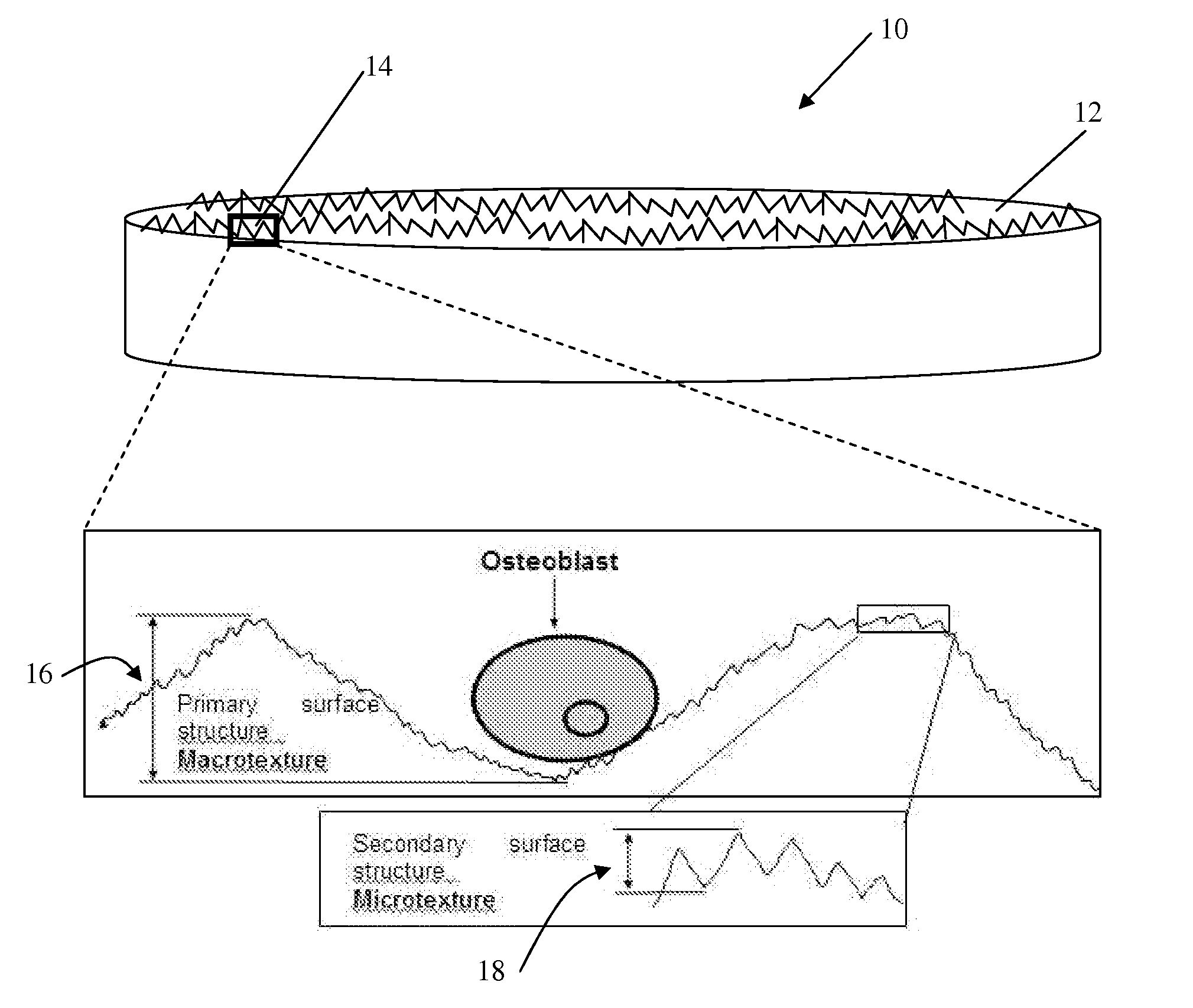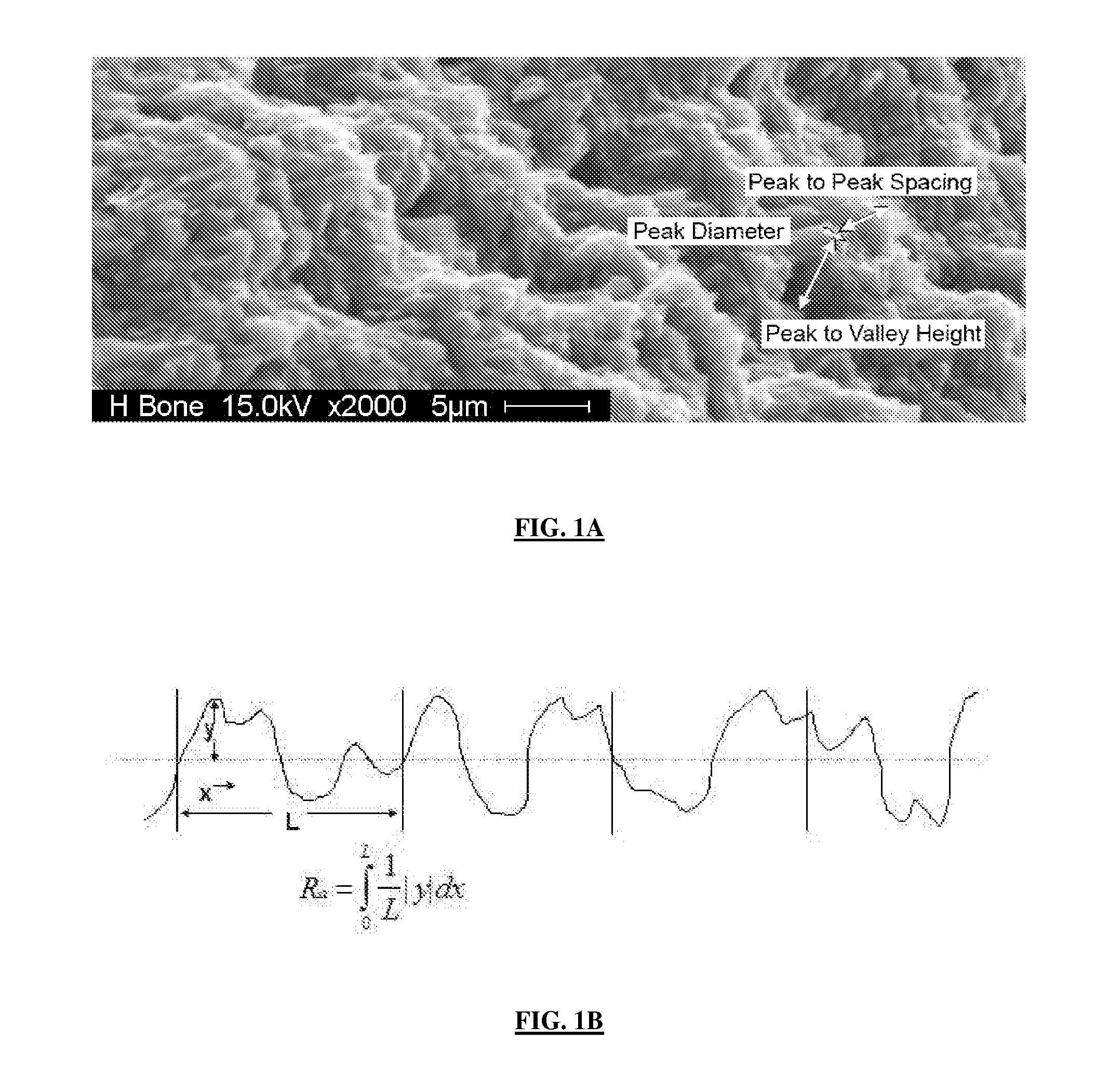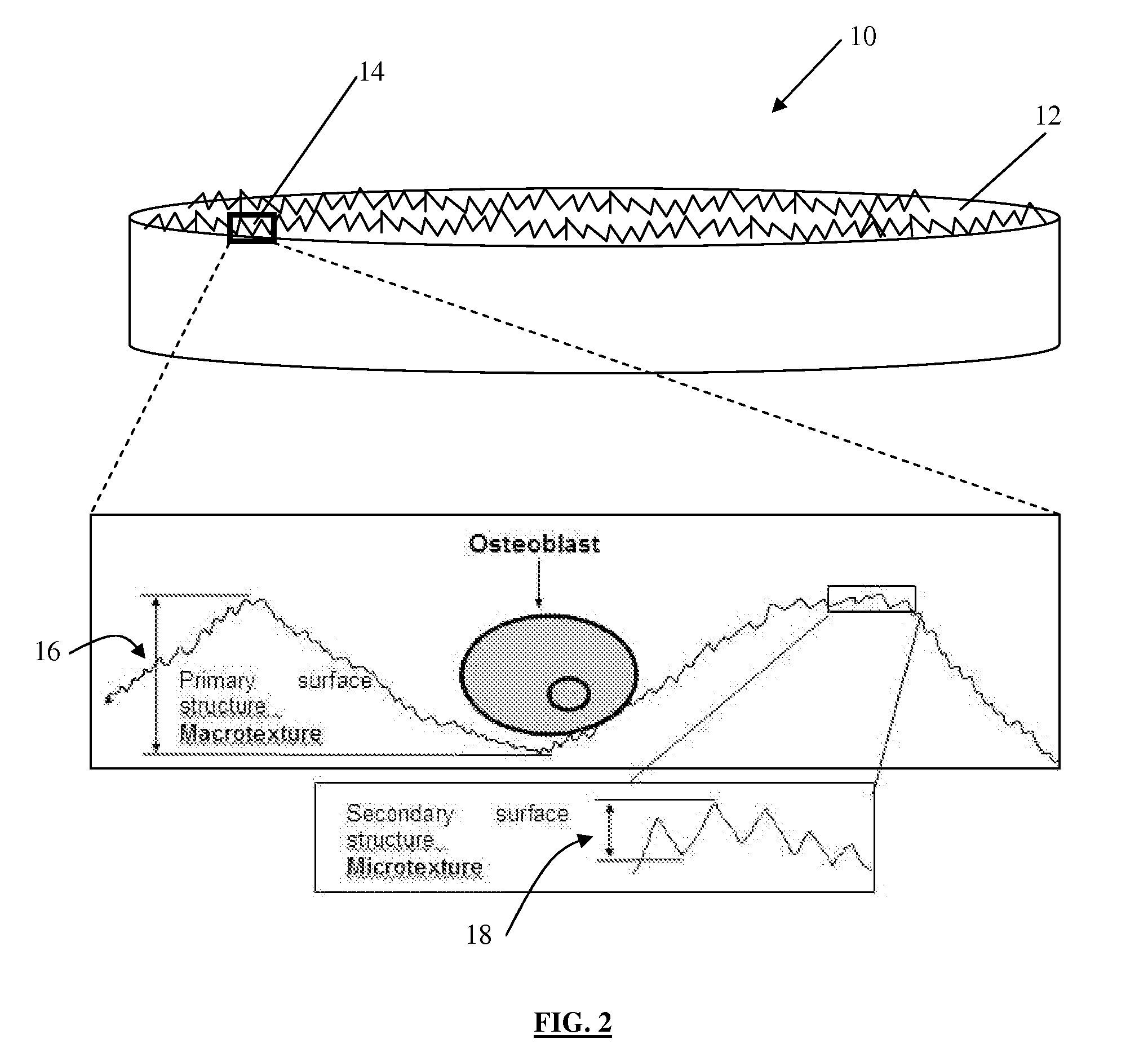Method and device for bone regeneration
- Summary
- Abstract
- Description
- Claims
- Application Information
AI Technical Summary
Benefits of technology
Problems solved by technology
Method used
Image
Examples
example 1
Bone Fracture Mode does not Affect Surface Topography
[0077]A fracture model capable of generating commonly observed clinically observed long bone fracture types (butterfly, transverse, comminuted, oblique) was developed to determine the fracture surface morphology for each of these fracture types as well as for periosteal and endosteal bone. Twenty paired femurs from skeletally mature mongrel canines were obtained immediately following euthanasia. Canine femurs are known to approximate human bone physiology, healing and remodelling. The femurs were carefully stripped of soft tissue whilst preserving the periosteum and avoiding damage to the periosteal surface. The harvested femurs were immediately wrapped in saline soaked surgical towels, placed in self-locking bags and frozen at −20° C. until testing. Prior to testing, the paired femurs were thawed at room temperature for 2 hours.
[0078]The proximal and distal ends of each femur were fixed in polymethylmethacrylate (PMMA) to produce...
example 2
Animal Species does not Affect Bone Fracture Surface Topography
[0084]Analysis of the bone fracture surfaces from a number of species (mouse, rat, rabbit and canine) determined that the texture of the fracture surfaces did not vary significantly between species. Transverse fractures were created by placing the bones in a guillotine. The fracture surfaces had a distinct irregular texture (FIG. 10) and were as defined previously in Example 1. The fracture surfaces had an average roughness (Ra) of approximately 2.7-3.3 μm. In contrast, analysis of the endosteal and periosteal bone surfaces revealed a much “smoother” surface with an average roughness Ra of 0.4-0.6 μm (FIG. 11).
example 3
Textured and Fractured Bone Surfaces Promote Osteoblast Mineralization In Vitro
[0085]An in vitro approach was used to assess the response of Canine marrow stromal cells (K9MC) cells to bone disks with surfaces which had been textured so that they were substantially similar to bone fracture surfaces, bone fracture surfaces and polished bone surfaces. Cultures were assessed for proliferation and evidence of mineralization.
[0086]Bone disks Bone disks (FIG. 12) were fabricated from bovine tibia. Bone plugs were cut perpendicular to the tibial shaft using a 21 mm (internal diameter) trephine bit The harvested bone plug was split with an osteotome in the direction of the long axis of the tibia to produce 90 halves each with a fractured surface (Fx bone). Sixty disks were further prepared by petrographic polishing to yield a smooth surface (Pol bone). Thirty of the polished disks were textured in a manner as defined in the present invention. Specifically, a Dremmel™ engraver having a 20 μm...
PUM
 Login to View More
Login to View More Abstract
Description
Claims
Application Information
 Login to View More
Login to View More - R&D
- Intellectual Property
- Life Sciences
- Materials
- Tech Scout
- Unparalleled Data Quality
- Higher Quality Content
- 60% Fewer Hallucinations
Browse by: Latest US Patents, China's latest patents, Technical Efficacy Thesaurus, Application Domain, Technology Topic, Popular Technical Reports.
© 2025 PatSnap. All rights reserved.Legal|Privacy policy|Modern Slavery Act Transparency Statement|Sitemap|About US| Contact US: help@patsnap.com



